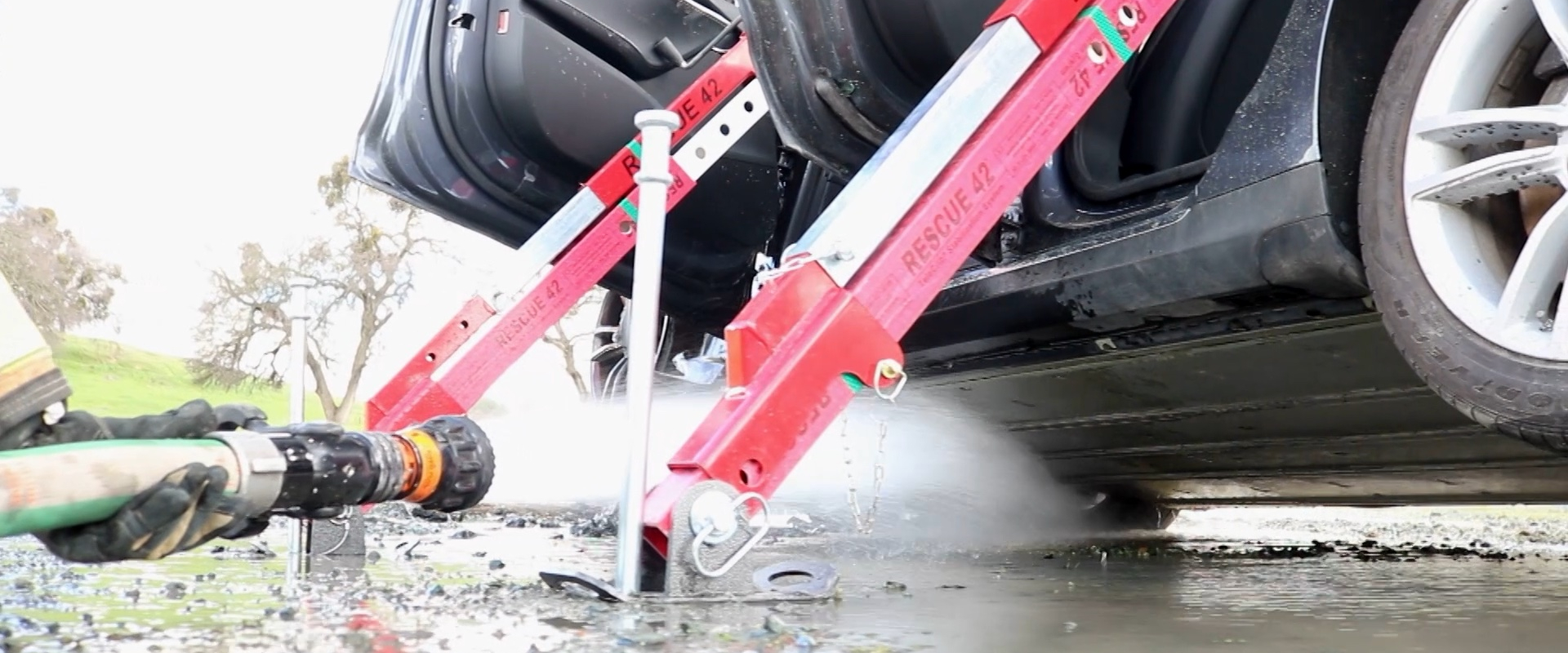Lithium Battery Fire Training
With the paradigm shift to plug-in electric vehicles ongoing in the car market, training is needed for city planners, electrical utilities, vehicle technicians and first responders, so that every community has the necessary know-how to effectively accommodate the coming EV influx. One such program from the National Fire Protection Association teaches the right way to approach a problem that’s grabbing headlines for all the wrong reasons.
Around 219,000 cars catch fire every year in the U.S., or an average of 600 per day. Electric and hybrid vehicles make up a tiny portion of that total, yet have captured the lion’s share of headlines lately, along with images showing them taking hours to extinguish and even reigniting after they were deemed safe.
The truth is, in some cases, the use of proper firefighting tactics could have resulted in far less damage and a lower risk of these fires getting out of control. It’s the NFPA’s mission to educate firefighters and first responders on how to deal with all types of fires, and their newest training program, developed through a U.S. Department of Energy funded project, is aimed specifically at fires involving lithium batteries.

ANDREW KLOCK: Hybrid and electric vehicles pose many new challenges for emergency responders and the firefighters. What we’re trying to do is train them from internal-combustion engine vehicles, regular gasoline cars that everyone drives, to how to deal with incidents and fires with electric vehicles and hybrids.
They have lithium-ion batteries in them, and these lithium-ion batteries really can cause some issues that firefighters are not prepared to deal with right now. Over the last hundred years, they’ve had plenty of time to work with internal-combustion engine vehicles. They know how to put out a gasoline car fire extremely quickly. But, with lithium-ion batteries, that generate their own heat and their own oxygen, it’s much more difficult.
So, you want to use water to cool the batteries down, so they don’t propagate from cell to cell to cell. If you can stop that process, which is called thermal runaway, you’re effectively putting out the fire.
JOHN DAVIS: The problem is not limited to electric vehicles: Battery storage for solar panels, ride-on power toys and other lithium battery products are equally at risk.
In the real-life scenario on which the training is based, a common household tool was responsible for setting the blaze.
ANDREW KLOCK: We put an electric vehicle in the garage, an energy storage system in the garage, connected it to the solar panels, and overcharged an electric drill to start the blaze. So, we wanted to see how the firefighters could best put out those fires in that garage, and we let it burn for 45 minutes and then let the firefighters attack the blaze. Very interesting results, and we based our simulation on the results of that test.
JOHN DAVIS: The training program is computer-based and has a gaming type interface, so participants can walk through scenarios and see the effect of their decisions in real time.
The NFPA’s online training is free and available to all firefighters, police, and EMS personnel around the country.
ANDREW KLOCK: NFPA has had electric vehicle and hybrid safety training for 14 years, and to date we have about 350,000 firefighters that have participated in that training. There’s 1.2 million firefighters in this country alone, and that doesn’t account for the law enforcement or the EMS or other first and second responders– tow truck operators– that we really want to reach with this information. So, there’s quite a challenge ahead, but we are making progress with these types of training programs.








